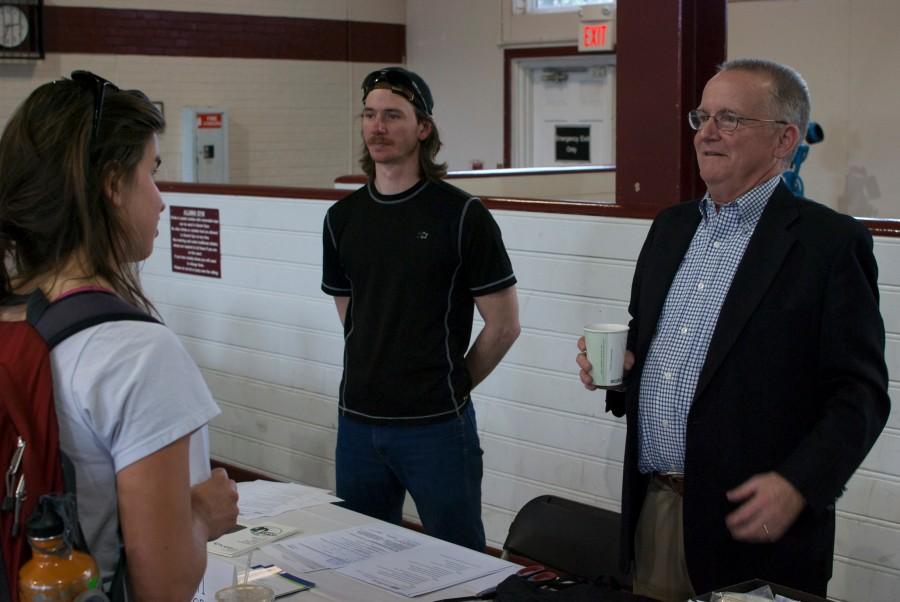It is 1:25 p.m. on March 16, and students have one thing on their minds: non-profit engagement. The Alumni Gym is humming with the buzz of activity as students search for jobs, internships or volunteer opportunities from the spread of 34 different non-profit agencies and representatives at the Non-Profit Engagement Fair.
Many seniors will soon be faced with the prospect of a full-time job. Current economic conditions aside, the prospect is daunting. Sponsored by the Career and Community Learning Center, the fair was designed for students moving into the work force as well as those who want to dip their toes into the real-world waters with an internship.
“The way we measure success in Career Development is not always the number of students or the number of booths,” said Career Development Center Director Alan Mueller. “Sometimes it’s that we know that one student met someone at one booth, and they’re going to get a real job. … Quite certainly, there were students who made connections that are going to result in internships (and) result in jobs.”
According to a recent article from The New York Times, the number of college graduates working for non-profit organizations raised by 11 percent in 2009.
This change may be due in part to a lack of traditional corporate jobs, but it could also be a result of changing attitudes towards public service.
“The millennial generation is a generation that is just more interested in making a difference than making a dollar,” said Max Stier, president and chief executive of non-profit organization Partnership for Public Service to The New York Times.
These sentiments were echoed by both the non-profit representatives and the students who attended the fair.
“I think this generation … is very interested in giving back and creating a healthy and more cohesive community,” said Margaret Winslow, Triad InternNet Project Manager.
“I just want to help as much as I can,” said sophomore Joshua Nickerson. “I’ve had a lot of help in my life, and I just want to be able to do the same for other people.”
The majority of students at the fair seemed to be interested in the service aspect of non-profit work, but The New York Times article focuses on employees who took service jobs primarily in response to the recent economic downturn.
According to The New York Times, “It is not clear … whether (the employees’) newfound paths will stick or if they will jump to more lucrative careers when jobs are more plentiful.”
Senior Morgan Freyer said her perspective was changed by her experience as an intern for the New Choices section of the Women’s Resource Center, which focuses on improving career opportunities for displaced homemakers.
“This wasn’t the first place I wanted to intern,” said Freyer. “By chance, I ended up here, and I didn’t think that I would like it nearly as much as I do. But I thoroughly enjoy it, and I love going every day. This really has opened my eyes to what else is out there.”
Though it is unclear whether economic prosperity will reverse the increase in non-profit workers, the primary interviewee for the article in The New York Times seemed to respond in a similar fashion to Freyer.
“I’m not opposed to working in the private sector, depending on what was available as I get older and need a more lucrative career to support family and so on,” said non-profit employee Alison Sadock to The New York Times. “But I’d still like to be something more meaningful. Maybe something in corporate philanthropy would work.”
Traci Bullock, non-profit representative for the Friendship Community Development Corporation and its affiliated resale boutique Great Things, believes working in non-profit areas can change a person’s outlook.
“If you have an ounce of compassion in you, the motivation (for non-profit work) will definitely change,” said Bullock. “It is definitely not about the money, but about what’s in your heart and helping people.”

